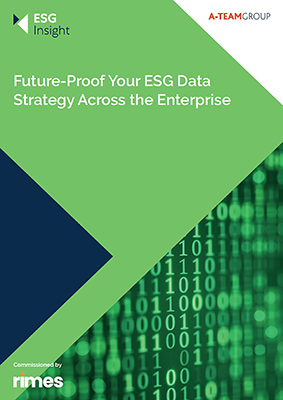
Future-Proof Your ESG Data Strategy Across the Enterprise
ESG data is now as important to financial institutions as traditional price and reference data. Ensuring that data is accurate and consistent is critical so that can deploy it in their portfolio and risk management strategies as well as regulatory reporting systems.
But ESG data is unlike that they would be used to. It’s often unstructured, coming from a variety of sources. Consequently, it needs to be carefully processed so that it can be ingested and integrated with firms’ other data.
Doing that requires expertise and resources that all but the very largest banks and asset managers are unlikely to possess. It makes sense, then, to entrust that work with a specialist that has many years of experience in normalizing and mastering the datasets of the world’s biggest financial institutions.
In this white paper, we explain the challenges that financial institutions face as they onboard ESG data and detail the best practices they should adopt to ensure a successful experience. It will discuss:
- How ESG data will help financial institutions identify where best to allocate their capital, build investment products that closely track sustainability benchmarks and comply with regulatory obligations;
- Why the process of ingesting that data is not straightforward and how attempting to manage it in-house can be time-consuming and costly while potentially leaving firms vulnerable to breaching regulatory requirements;
- Why mastering is a key stage in the ESG data ingestion and management process;
- The reasons why relying solely on data vendors to manage the process is also prone to shortcomings.

